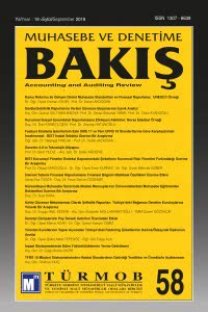Satıca hileleri
İşletmelerde ciddi zararlara neden olan hile olayları, işletmelerin çalışanları, yöneticileri, müşterileri ve satıcıları tarafından gerçekleştirilebilir. Satıcılar tarafından gerçekleştirilen hilelerde işletmeye satış yapan taraf, işletmeye karşı gerçekleştireceği hileyi kendi başına yapabilmekte ve işletmeye zarar verebilmektedir. Bunun dışında satıcılar aynı hileleri, işletme içinden bir çalışan ile işbirliği gerçekleştirerek de hayata geçirebilmekte ve işletmelere çok büyük çaplı zararlar verebilmektedirler. İşletme çalışanının satıcıya yardım etmesi sonunda elde edeceği menfaat beklentisi, satıcı tarafından gerçekleştirilen hilenin hem daha kolay gerçekleştirilmesini hem de sonrasında, iyi gizlenmesini sağlamaktadır. Satıcı hileleri, işletmeye yüksek -şişirilmiş- faturalama yapılması, anlaşılan maldan daha düşük kaliteli bir malın teslim edilmesi, aynı satış işlemine ilişkin birden fazla kez faturalama yapılması, faturada belirtilen malın eksik teslim edilmesi ve gerçekte sipariş edilmemiş veya sevkedil- memiş mallar için fatura düzenleyerek işletmeye gönderilmesi şekillerinde gerçekleştirilebilmektedir
Vendor fraud
Fraudulent acts may be initiated by a corporations employees, managers, customers, and vendors. Fraudulent acts by vendors may either be committed individually or in cooperation with employees of an enterprise. An employee receiving a personal benefit on such a fraud act may facilitate a vendor commit fraud and hide any trace of such act. Such frauds give even more damage to an enterprise. Several potential ways of a fraudulant activity performed by a vendor is sending inflated invoices to a customer enterprise, delivering goods having quality lower than previously agreed upon, sending multiple invoices for a single transaction, delivering goods in smaller amounts than specified on invoice, and preparing invoice for goods that havent been ordered or delivered.
___
W.Steve ve Albrecht, Chad O.,Fraud Examination,Thomsonn South Western, USA,2003.Albrecht, Conan C. ve Albrecht, W. Steve ve Dunn, J. Gregory, Conducting a Pro-Active Fraud Audit: A Case Study, Journal of Forensic Accounting, June-December 2000, Vol 2., s. 203-218.
Banks, David G., Vendor Fraud: Finding Deals Gone Awry, The White Paper, Vol. 16, No.5,Eylül-Ekim2002. http://www.fraud-magazine.com/article.aspx?id=4294968224&Site=ACFEWEB (Erişim Tarihi: 22.12.2012)
Bozkurt, Nejat, İşletmelerin Kara Deliği Hile Çalışan Hileleri, Alfa Basım Yayım Dağıtım, İstanbul, 2009.
Bozkurt, Nejat, Muhasebe Denetimi, Alfa Basım Yayım Dağıtım, İstanbul, 2000.
Bragg, Steven M., Accounting Best Practices, 6th edition,John Wiley&Sons Inc, Hoboken, New Jersey, 2010.
Christensen Jo Ann ve Byington, J. Ralph, The Computer: An Essential Fraud Detection Tool,The Journal of Corporate Accounting & Finance, Temmuz-Ağustos 2003, Volume 14, Issue 5, s. 2327.
Coderre, David, Fraud Analysis Techniques Using ACL, John Wiley & Sons, Inc. Hoboken, New Jersey, 2009.
Coenen, Tracy, Essentials of Corporate Fraud, John Wiley & Sons, Inc. Hoboken, New Jersey, 2008.
Elder, Randal J. ve Beasley, Mark S. ve Arens, Alvin A., Auditing And Assurance Services, 13th edition, Pearson Prentice Hall, New Jersey, 2010.
Goldmann, Peter D. ve Kaufman, Hilton., Anti-Fraud Risk and Control. Wiley Hoboken, New Jersey, 2009.
Gordon, Kathryn ve Miyake, Maiko, Business Approaches to Combating Bribery: A Study of Codes of Conduct, Journal of Business Ethics, December 2001, Volume 34, Issue 3-4, s. 161-173.
Greene, Craig L., Audit Those Vendors, The White Paper, Mayıs-Haziran 2003, Vol.17, No.3, http://www.fraud- magazine.com/article.aspx?id=4294967859 (Erişim Tarihi:18.11.2012).
Kovacich, Gerald L., Fighting Fraud, Elsevier Academic Press, USA, 2008.
Lanza, Richard B., Proactively Detecting Occupational Fraud Using Computer Audit Reports, The IIA Research Foundation, Florida, 2003.
Magal, Simha R. ve Word, Jeffrey, Integrated Business Processes with ERP Systems, John Wiley & Sons, Inc. Hoboken, New Jersey, 2012.
Olsen, William P., Anti-Corruption Handbook : How to Protect Your Business in the Global Marketplace,Wiley Hoboken, New Jersey, 2010.
Regan, David O, Auditors Dictionary, John Wiley & Sons Inc. Hoboken, New Jersey, 2004.
Silverstone, Howard ve Davia, Howard R., Fraud 101 Techniques and Strategies For Detection, 2nd edition, John Wiley and Sons Inc Hoboken, New Jersey, 2005.
Silverstone, Howard ve Sheetz, Michael, Forensic Accounting and Fraud Investigation for Non-Experts, John Wiley & Sons Inc Hoboken, New Jersey, 2007.
Singleton, Tommy ve Singleton, Aaron ve Bologna, Jack ve Lindquist, Robert, Fraud Auditing and Forensic Accounting, 3rd edition, John Wiley & Sons Inc Hoboken, New Jersey, 2006.
Schaeffer, Mary S., Essentials of Accounts Payable, John Wiley & Sons Inc, NewYork, 2002.
Schaeffer, Mary S.,Accounts Payable : A Guide to Running an Efficient Department, Institute of Management and Administration (IOMA), Wiley Hoboken, New Jersey, 2004.
Schaeffer, Mary S.,Fraud in Accounts Payable: How to Prevent It, John Wiley & Sons Inc Hoboken, New Jersey, 2008
Tackett, James A., Bribery and Corruption, The Journal of Corporate Accounting & Finance, Mayıs-Haziran 2010, Vol 21, Issue 4, s. 5-8.
Trainor, Charles K., Vetting Your Vendors, American School Board Journal, Temmuz 2009, Vol. 196, Isuu- e 7, s. 42-43.
Turner, Leslie ve Weickgenannt, Andrea, Accounting Information Systems: Controls and Processes, John Wi-ley & Sons, Inc. Hoboken, New Jersey, 2009.
Vona, Leonard W., Fraud Risk Assesment: Building a Fraud Audit Program , John Wiley & Sons, Inc., Hoboken, New Jersey, 2008.
Wells, Joseph T., Corruption: Causes and Cures, Journal of Accountancy, Nisan 2003, Vol. 195, Issue 4, s.49-52.
Zack, Gerard M., Fraud and Abuse in Nonprofit Organizations: A Guide to Prevention and Detection, Wi-ley Hoboken, New Jersey, 2003
- ISSN: 1307-6639
- Yayın Aralığı: Yılda 3 Sayı
- Başlangıç: 2000
- Yayıncı: TÜRMOB
Sayıdaki Diğer Makaleler
Altın piyasasında ay ve mevsim etkisinin incelenmesi: Türkiye uygulaması
ALTIN PİYASASINDA AY VE MEVSİM ETKİSİNİN İNCELENMESİ: TÜRKİYE UYGULAMASI
RİSK ODAKLI İÇ DENETİM UYGULAMALARINDA YABANCI ORTAKLIĞIN ETKİSİ: İMKB UYGULAMASI
Risk odaklı iç denetim uygulamalarında yabancı ortaklığın etkisi: İMKB uygulaması
